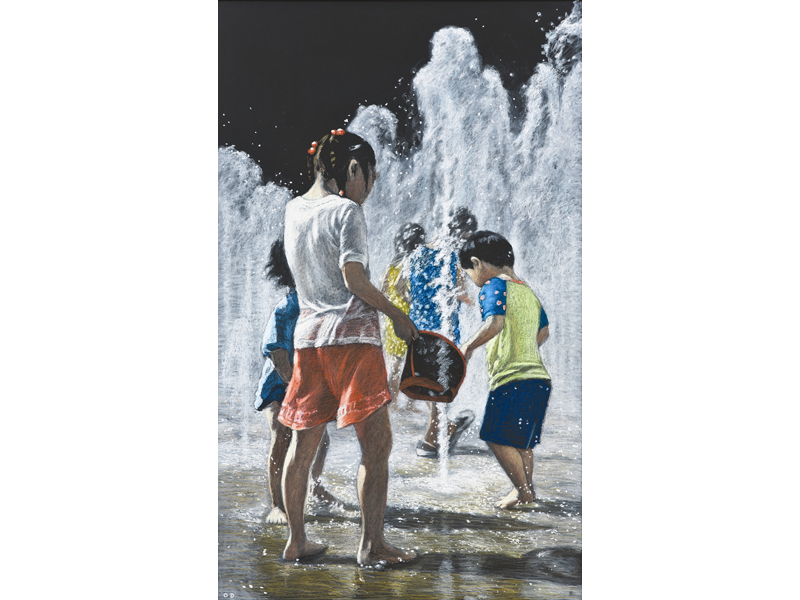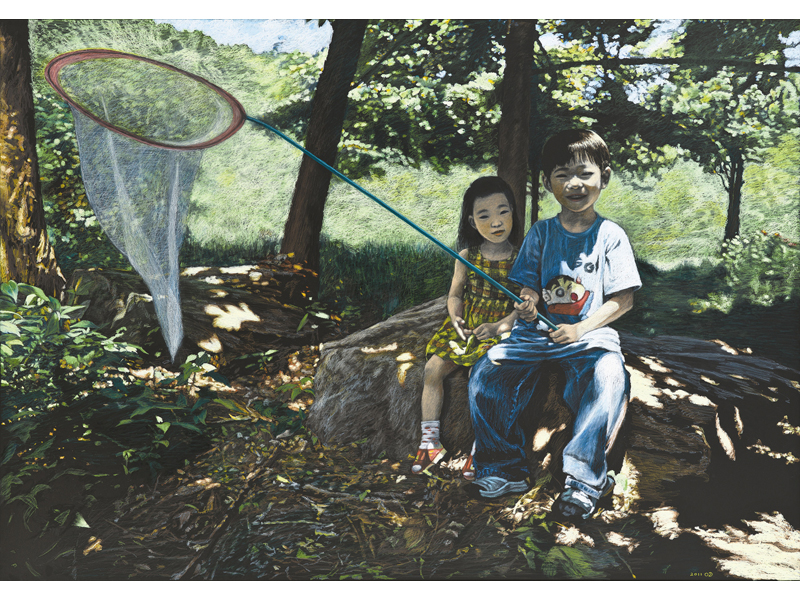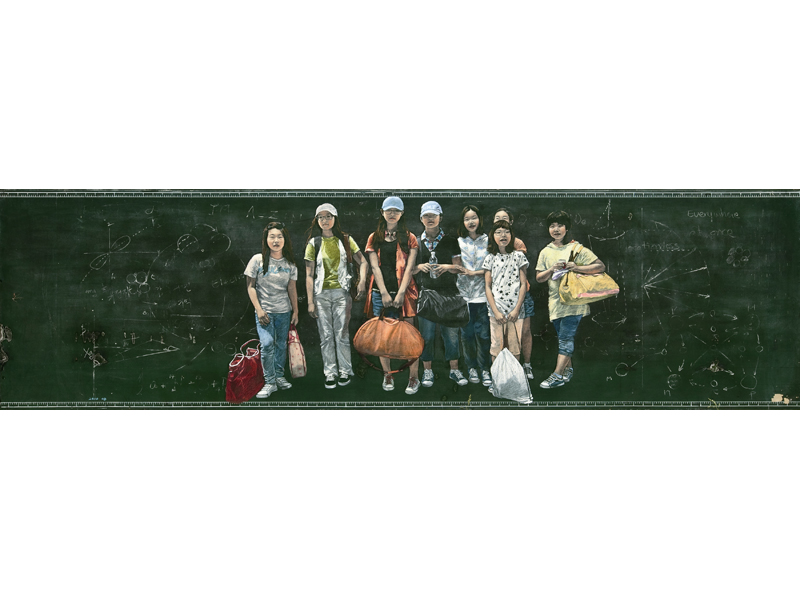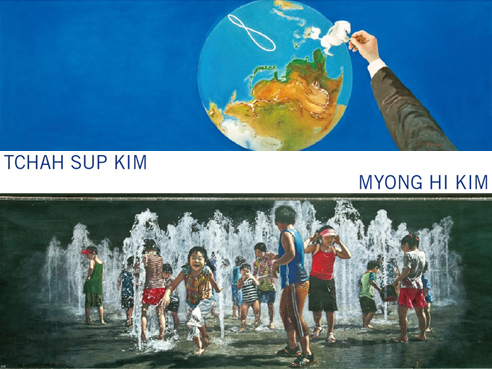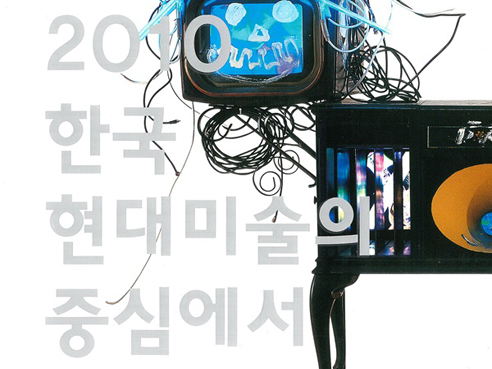Like many artists today, Myong Hi Kim is experienced in the ways of the modern nomad. She moves between homes in New York and Korea, she pursues her art in remote corners of the world, most recently traveling the length of the Trans-Siberian railroad, and she exhibits her work internationally. Such mobility no doubt contributes to her interest in earlier migrations, both voluntary and forced, which are an essential part of her Korean heritage. Kim deals as well with dislocations caused by time. Since moving in 1990 to an abandoned schoolhouse in the remote northern countryside of South Korea, she has become increasingly haunted by the children who once studied there. This interest was heightened by her discovery of the chalkboards once used for lessons. These have become the canvases for many of her recent works. In these paintings, shapes and forms emerge from the mysterious blackness of the chalk boards like ghosts temporarily freed from the constraints of history. Many feature children much like those who would have gathered in her schoolhouse home many decades ago. Often there are chalk markings in the background of these paintings. Half erased Korean inscriptions or mathematical notations conjure daily lessons created to be erased, like the memory of these children, so that others can replace them. The chalkboard on which she paints her images embodies the promise that history can be rewritten in this new century. Similarly, the figures in her paintings, however much burdened by outside forces, remain resilient and unbowed. Change may be inevitable, and dislocation the human condition, but Kim suggests that we don't have to be defined by the cruelties of the past. Eleanor Heartney(Art Critic) / Kim Yun(Translation)









